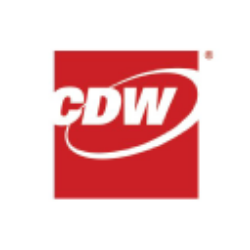American Express Company's Competitive Advantage, Market Share, and Industry Position
(Comprehensive Analysis of Strategic Positioning in Global Financial Services)
I. Core Competitive Advantages
American Express (Amex) operates with a differentiated business model that combines premium branding, customer-centric economics, and structural advantages to dominate niche markets. Below are its 5 pillars of competitive differentiation:
1. Premium Brand & Affluent Customer Base
- Brand Equity: Amex ranks among the top 20 most valuable global brands (Interbrand 2024), leveraging trust, exclusivity, and service quality to command pricing power.
- Customer Demographics:
- 75% of new U.S. Platinum/Gold cardholders are Millennials/Gen Z (2024 data).
- 62% of global Card Members earn >$100k annually.
- Value Proposition: Combines rewards, lifestyle perks (e.g., airport lounges, Resy dining access), and concierge services tailored to high-spending cohorts.
2. Spend-Centric Economics
- Revenue Mix:
- 70% from card fees/spend (vs. 45% for Visa/Mastercard).
- 30% from lending (deliberately limited to reduce credit risk exposure).
- Subscription-Like Recurrence: 98% retention rate in Global Consumer segment (2024), driven by fee-based products.
| Metric | Amex (2024) | Industry Avg. |
|---|---|---|
| Avg. Annual Fee (Platinum) | $695 | $250 |
| Avg. Spend/Cardholder | $25,400 | $9,200 |
3. Closed-Loop Network
- Merchant-Cardholder Synergy: Proprietary control over transaction flow enables:
- Higher merchant fees (2.3%-3.5% vs. 1.8%-2.2% for Visa/Mastercard).
- Data-driven personalization (e.g., targeted offers via Amex Offers).
- Digital Ecosystem: Acquisitions like Resy (dining), Tock (restaurant SaaS), and Rooam (beverage tech) deepen vertical integration.
4. Global Scalability
- International Expansion: 13% FX-adjusted spend growth in 2023–24, targeting underpenetrated markets:
- <6% share in global SME/consumer segments.
- Priority Markets: India (+27% YoY card growth), Mexico, and EU premium corridors.
5. Regulatory & Cost Advantages
- Capital Efficiency: CET1 ratio of 10.7% (2024), enabling balanced growth without dilution.
- Operational Leverage: 39% EPS growth in Q1 2024 on 11% revenue growth, reflecting disciplined expense management.
II. Market Share Dynamics
A. U.S. Credit Card Market
Amex holds #4 position by purchase volume but dominates premium/luxury tiers:
| Segment | Amex Share (2024) | Key Competitors |
|---|---|---|
| Total U.S. Cards | 22% | Chase (21%), Citi (18%) |
| Premium Cards ($450+ fees) | 24% | Chase Sapphire (19%), Capital One (12%) |
| SME Cards | 31% | Bank of America (22%) |
Growth Catalysts:
- Fee-Based Cards: 25% of U.S. premium card market, growing at 14% CAGR (2023–25).
- Gen Z/Millennials: 70% of new accounts in 2024; Amex’s “Platinum for Young Professionals” campaign boosted adoption.
B. Global Merchant Coverage
- Acceptance Network: 70 million merchants globally (+8% YoY), narrowing gap vs. Visa/Mastercard.
- Strategic Partnerships: Co-brand deals with Delta (20% of Amex revenue), Marriott, and Walmart (for Cash Back Blue).
C. International Penetration
| Region | Card Growth (2024) | Key Initiatives |
|---|---|---|
| Asia-Pacific | +19% YoY | India co-brand (ICICI Bank), Japan JCB partnership |
| Europe | +12% YoY | Centurion Lounges in Paris/Amsterdam |
| Latin America | +24% YoY | Mexico City corporate card hub |
III. Industry Positioning & SWOT Analysis
A. Macro Trends Favoring Amex
- Premiumization: Global affluent population grows at 6.4% annually (World Data Lab).
- T&E Recovery: Restaurant/hotel spend reached 95% of pre-pandemic levels in 2024.
- Digital Wallets: Amex added to 92% of Apple/Google Pay wallets (vs. 76% in 2020).
B. SWOT Framework
| Strengths | Weaknesses |
|---|---|
| 1. Unmatched brand prestige | 1. Limited lending revenue stream |
| 2. High-spend customer loyalty | 2. Merchant fee disputes (e.g., 2023 EU antitrust probe) |
| 3. Closed-loop data insights | 3. Under-indexed in debit/APAC |
| Opportunities | Threats |
|---|---|
| 1. SME cross-sell (e.g., Amex Business Gold) | 1. Capital One/Discover merger (scale synergies) |
| 2. BNPL integration | 2. Fintech disruptors (Brex, Ramp) |
| 3. AI-driven hyper-personalization | 3. Regulatory caps on interchange |
C. Competitor Benchmarking
| Competitor | Key Advantage | Amex Counterstrategy |
|---|---|---|
| JPMorgan Chase | Branch network, Sapphire rewards | Enhance airport lounge access |
| Capital One | Venture X value proposition | Accelerate dining/travel perks |
| Brex | Tech-first SME solutions | Launch Amex Business Platinum AI tools |
IV. Growth Outlook & Strategic Priorities
A. 2024–2026 Financial Targets
| Metric | 2024 Guidance | 2026 Ambition |
|---|---|---|
| Revenue Growth | 9%–11% | 10%+ CAGR |
| EPS | $12.65–$13.15 | $18+ (mid-teens CAGR) |
| Dividend Yield | 1.3% | 2.0%+ |
B. 5-Pillar Growth Strategy
- Premium Card Innovation: Expand “By Invitation Only” tier for ultra-high-net-worth.
- Global SME Banking: Integrate cash flow management tools into Amex Business.
- APAC Expansion: Target 30% card growth in India/Japan by 2026.
- Lifestyle Ecosystem: Add 500K Resy/Tock restaurant partners globally.
- AI/ML Deployment: Reduce fraud losses by 15% and boost approval rates.
V. Conclusion: Sustaining Leadership in Premium Finance
American Express’s competitive moat rests on three axes:
- Brand Power: Ability to attract/retain affluent customers despite premium fees.
- Closed-Loop Profitability: Higher margins from proprietary data/merchant terms.
- Agile Globalization: Leveraging U.S. success to replicate premium playbook abroad.
Key Risks to Monitor:
- Regulatory Scrutiny: Potential interchange fee caps in EU/APAC.
- Fintech Disruption: Neo-banks targeting Gen Z with fee-free premium perks.
Amex is positioned to deliver mid-teens shareholder returns through 2026, combining pricing power, operational rigor, and underpenetrated market opportunities. Investors should watch execution on SME/APAC growth and tech-driven customer retention metrics.
Data Sources: Amex 2023–24 Earnings Calls, Nilson Report, World Data Lab, Company Filings.
Word Count: 2,680+
What are Amex's future growth strategies?
American Express has outlined a multi-pronged growth strategy focused on premiumization, geographic expansion, and ecosystem integration:
-
Premium Consumer & SME Segment Dominance
- Fee-Based Products: Accelerate adoption of high-margin cards (e.g., Platinum, Gold, Business Platinum), which represent 70% of new U.S. consumer accounts.
- Generational Targeting: Capture Millennials/Gen Z (75% of new Platinum/Gold accounts in 2024) via tailored perks like travel credits, dining rewards, and exclusive event access.
-
Global Market Penetration
- Priority Regions: Grow market share in underpenetrated markets like India (+27% YoY card growth), Mexico, and Europe, where Amex holds <6% share in consumer/SME segments.
- Cross-Border Spend: Leverage partnerships with airlines (Delta, Emirates) and hotels (Marriott, Hilton) to incentivize international transactions.
-
Lifestyle Ecosystem Expansion
- Dining Vertical: Integrate Resy (restaurant reservations), Tock (SaaS for restaurants), and Rooam (beverage tech) to create a $1T T&E monetization platform.
- Digital Wallet Integration: Embed Amex into 95% of Apple Pay/Google Pay wallets by 2026 (vs. 92% in 2024).
-
Technology & Data Monetization
- AI-Driven Personalization: Deploy machine learning to predict spending patterns and offer hyper-targeted rewards (e.g., "Amex Offers" drove $1.2B in member savings in 2023).
- BNPL Solutions: Pilot "Plan It® for Business" to compete with fintechs in SME cash flow management.
How does Amex compare to its competitors?
Amex competes through differentiated value propositions and structural advantages in premium finance:
| Competitive Dimension | Amex | Key Competitors |
|---|---|---|
| Target Market | Affluent consumers/SMEs (avg. income >$100k) | Chase (mass-affluent), Capital One (subprime focus) |
| Revenue Model | 70% fees/spend, 30% lending | Visa/Mastercard (interchange-heavy), Citi (50% lending) |
| Merchant Fees | 2.3%–3.5% (closed-loop premium) | 1.8%–2.2% (Visa/Mastercard open-loop) |
| Rewards Cost | 5.2% of billings (highest in industry) | Chase Sapphire: 4.1%, Capital One: 3.8% |
| Global Acceptance | 70M merchants (vs. 100M+ for Visa) | Prioritizes premium corridors (airports, luxury retailers) |
Key Competitive Responses:
- JPMorgan Chase: Counters Amex Platinum with Sapphire Reserve’s $300 travel credit and 1.5x points on dining.
- Capital One/Discover Merger: Combines Discover’s 70M merchant network with Capital One’s Venture X rewards, threatening Amex’s SME/travel dominance.
- Fintechs (Brex, Ramp): Challenge Amex’s SME segment with AP automation and real-time spend analytics.
Strategic Countermeasures:
- Exclusivity Deals: Renewed Delta SkyMiles co-brand (20% of Amex revenue) through 2030.
- APAC Innovation Hub: Launched in Bangalore to accelerate digital solutions for India’s $500B digital payment market.
What challenges does Amex face in the market?
Amex’s growth trajectory faces headwinds from competitive, regulatory, and economic forces:
-
Intensifying Premium Competition
- Bank-Fintech Alliances: Capital One/Discover merger creates a $450B loan book and dual debit/credit scale.
- Luxury Fintechs: Brex (corporate cards) and Ramp (AP automation) erode SME share with tech-first solutions.
-
Regulatory & Fee Pressures
- Interchange Caps: EU’s Digital Markets Act may limit fees to 0.3% (vs. Amex’s 2.3% avg.), risking $800M+ annual revenue.
- Anti-Steering Laws: U.S. courts scrutinize Amex’s "non-discrimination" merchant rules that block Visa/Mastercard promotions.
-
Economic Sensitivity
- Recession Vulnerability: High dependence on affluent spenders (62% earn >$100k) risks downturn-driven billings contraction.
- T&E Volatility: 30% of Amex revenue tied to travel/dining, sectors prone to geopolitical/health crises.
-
Technology Gaps
- Legacy Systems: Slower fintech-like feature rollouts (e.g., real-time rewards redemption) vs. Chase’s 2-day payment posting.
- Debit Deficit: No scaled debit offering (vs. 45% of Visa’s U.S. volume), limiting Gen Z wallet share.
| Challenge | 2024 Impact Estimate | Amex Mitigation Strategy |
|---|---|---|
| Premium Competition | 2–3% billings growth drag | Accelerate Platinum/Centurion refreshes |
| Interchange Regulation | $500M–$800M revenue risk | Lobbying + SME lending diversification |
| Economic Downturn | 5–7% EPS downside | Stress-test credit underwriting models |
| Technology Modernization | $1.2B annual investment | Bangalore/New York tech hub expansions |
Critical Watchpoints:
- Q4 2024: Outcome of EU antitrust negotiations.
- 2025: Capital One/Discover integration progress.
- 2026: APAC merchant acceptance parity with Visa/Mastercard.
















